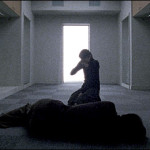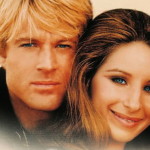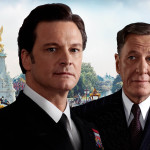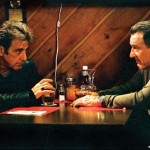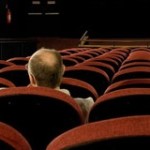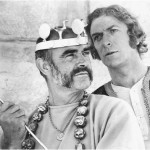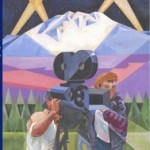The Basic Elements That Add Up to a Good Film
Guest Columnist
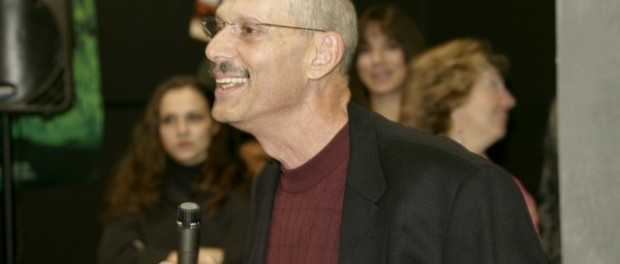
By Jeffrey Winters
Communicating with people in our lives can be one of our great pleasures. People love to talk, argue, share perceptions, and discuss films. The purpose of this article is to suggest a language and way of viewing a film that will enhance your discussions. Use it to widen your film vocabulary in order to express our many perceptions, feelings, opinions and thoughts we get from watching a good film. Let’s increase our ability to have a great conversation.
Writing
With film, the writing is the beginning (after the idea) of a collaborative process, which leads to various interpretations and languages for each interconnected component of the film. In other words, the camera speaks a language, as does the acting and directing and sound. A good film always has a wonderful interconnection between the various collaborators and elements. The people who write a screenplay need to use a special language, other than dialogue, which gives instruction and information. For instance it might just say interior: with a description of the decrepit home or exterior with a very brief description of the rain outside the crowded streets of the city they are in. Good screenplay writing must talk several languages for each component of the film. Even then, the director changes the color or tone or location. The actors interpret where to put emotional emphasis and the camera picks up an expression
Lets have a conversation about the writing in a film. A good screenplay uses dialogue in a Zig-Zag manner, which is how people usually talk to one another. Zig-Zag is an accurate description of indirect communication when we converse. Who doesn’t remember how obtuse we can get with family, in relationships and life in general? Often we dance around with our words. For some people directness is just plain uncomfortable. Therefore most screenplays are written where the characters communicate indirectly, or Zig Zag, as they look at each other.
Subtext
Sometimes indirect dialogue and words can say one thing, and mean another. A well-written script in the hands of terrific actors often leaves the unspoken, or indirect word underneath what is being said. This is called the subtext. It is a powerful opportunity for us to feel for, empathize, care about (or despise) the various characters. Good camera work captures the teardrop, smile, frown or look of disgust, which works with the spoken words, but helps inform us what they mean. When a character starts a film by talking in a very zig-zag fashion; it could be the writers intent to use the subtext to involve us the audience in feeling the conflict, or igniting our curiosity. Many times an audience has to be hooked, or feel involved quickly. Clever dialogue uses words to hide what is going on inside the character and the story. In discussing the writing, look for what wasn’t said that leaves you curious.
The King’s Speech was so beautifully written because often the words between Jeffrey Rush as speech therapist Lionel Logue, and Colin Firth as King George VI of Britain, conveyed more feeling by what wasn’t said. The words used were just a clever way into a deep, beautiful friendship. Also, the way they spoke, especially the Jeffrey Rush character using clever and smug words, had an important purpose. His dialogue at critical times conveyed humor to relieve them of the enormous tension. We quickly felt and cared for Colin Firth because of his huge struggle with stuttering and acute social awkwardness. We were made aware of conflict, pain, and the beginnings of an important relationship almost immediately. We were sucked in. We cared. The actors took exceptional writing and told a fantastic story. This is storytelling at its best.
When you discuss films with your friends or family or chat with a stranger, the most important aspect of the film is what kind of storytelling is it? What made that storytelling special in the collaboration process?
Acting
When discussing a film people usually think the most impressive aspects of the film is the acting, because acting is so critical to our impression of a film. Here’s something to look for that can enhance your point of view of the acting, and which makes a good film so delightful to observe. Carefully watch two equally fabulous actors are both in dialogue together and neither tries to be bigger or better then the other actor. They just maintain their authenticity of their character and communicate with each other. An example is Robert DeNiro who plays a very smart crook and Al Pacino who is an equally shrewd cop in the mediocre film “Heat.” There’s a scene where the action and thriller aspect of the film is stopped and the two actors are in a diner seated at a table opposite each other. DeNiro moves his mouth in his famous “mouth-moving way,” and Pacino stares and talks with his “Pacino intensity.” However, they discuss the business they are in all the time letting the subtext underneath the dialogue scream out loud. Pacino says I’m going to catch you and take you down and DeNiro bobs and weaves and says “no you’re not!” I just watched these two American jewel actors and loved the interaction. This is also true with great ensemble acting. Each actor and actress so inhabits their character, and they play off of each other, it looks and feels like a smooth beautiful dance. When discussing the film’s acting, try to include how the various actors played off of one another. It will broaden the discussion.
Sound Track
I have a friend who memorizes who wrote the score to various films. She is amazingly accurate in describing the emotion or tension or happiness created by the music. Often the music is in the background of our awareness. Some music is so beautiful it deserves to be mentioned.
We could have an evening with friends playing a parlor game where we come up with a song from a film that had a profound impact on us. For instance I will never forget how my mother loved the song “The Way We Were,” sung by her favorite singer Barbra Streisand in the love story with Robert Redford in the film, “The Way We Were.” At the time, I was emotionally influenced by Whitney Houston singing “I Will Always Love You,’ in the love story “The Bodyguard,” with Kevin Costner. Not only do I love hearing Whitney Houston sing that song, but it took place while I was having a difficult time in life. In a way the song acted as my emotional catharsis song. Certain songs from various films will influence us for a life time.
Cinematography
I remember a Japanese film I showed at the Mount Shasta International Film Festival called: “Tony Takatami.” We felt at the time that the camera captured a look, a mood, and swept across the screen during silence in such a powerful way that the camera work not only showed the story, but conveyed tremendous emotion through visual images that substituted for dialogue. It was beautiful and refreshing to have a film convey so much information without relying on dialogue.
Often all great films have camera work that is profound, moody, varied, and expressing stunning visual imagery along with unique texture. When you look at a film try to notice how the camera work captures something special through the visual technique of the director of photography. One simple way to discuss what the visual quality is one in which you notice how they used close ups to show emotion, mid-range shots and long distant shots to convey other things. We can be be scared by an image far away and when they slowly bring it closer until we can see the sweat glands on the killer’s face and feel something truly visceral affecting us.
Directing
It’s so fascinating to read or hear in an interview with the actors how different directors work. From Woody Allen, Hitchcock, John Huston, Stephen Spielberg, Martin Scorsese etc. They all take their vision of the film and work with their actor’s and crew differently. I just finished reading Michael Caine describe how the late and great John Huston directed Caine and Sean Connery in that wonderful film, “The Man Who Would Be King.” Sometimes you read or hear that another great director says very little but expects his or her actor’s to nail the character on their own. Regardless of how they do it, almost every great film has to credit the direction. It is such a complex job requiring a person be the leader in every aspect of the film. They resemble the director of a symphony, able to hear every instrument and sound, then know when to pause, emphasize and work with others to create beautiful music. They may sit and leave the work to crew and actors, but they maneuver the film to get it made. They make sure the story is told as effectively as it can be. Since a director usually works with millions of dollars of other people’s money, they can’t have many failures if they want to keep directing. It’s an important job to be the leader of a bunch of creative and sometimes crazy people, but a leader you must be. A ship can have only one captain, one who has the experience to sift through the varying opinions of his or her crew, and to take the best and leave the worst of those ideas, and with finesse and grace bring that ship safely home to as close to perfection as possible.

